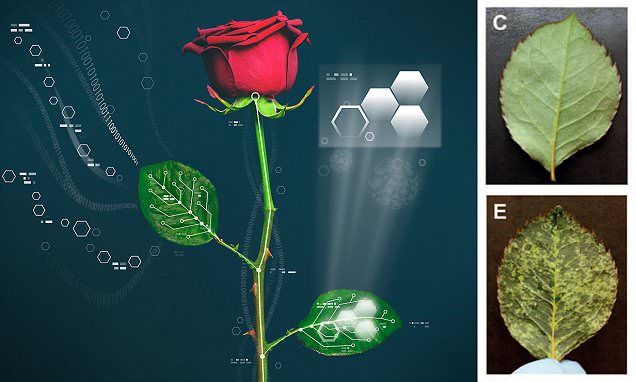Page 11926
Nov 24, 2015
Saving Passengers from a falling Plane!
Posted by Shailesh Prasad in category: transportation
The Russians are studying how to save the passenger aircraft before falling!
Visit: www.technologyvista.com
Nov 23, 2015
Will NASA Ever Send Astronauts To Pluto?
Posted by Bruce Dorminey in category: space travel
With its nitrogen-dominated atmosphere and water-rich icy surface, Pluto seems much more hospitable than even the most sanguine planetary scientists would have wagered a decade ago. But could it ever play host to an Antarctic-styled research station?
That is, as a base to routinely house researcher/astronauts out to give humans a foothold in the outer reaches of our solar system?
“The notion of a Pluto base figures prominently in the anime ‘Star Blazers’ from my childhood, so it’d be wonderful if there were a good reason for it,” said Gerard van Belle, a research astronomer at Lowell Observatory in Flagstaff, Az., where Clyde Tombaugh discovered the diminutive dwarf planet some 85 years ago.
Nov 23, 2015
Google Glass Successor Dumps Some Glass — By Jessica E. Lessin | The Information
Posted by Odette Bohr Dienel in categories: augmented reality, business, wearables
“We’ve learned that Google’s revamped Google Glass project, dubbed Project Aura, is working on a wearable with a screen—and at least one without.”
Nov 23, 2015
Will Our Descendants Survive the Destruction of the Universe?
Posted by Montie Adkins in categories: existential risks, futurism
Now there’s a lifeboat. However my life may be extended, if anyone lives that long or some future generation has to deal with it, at some point this universe will be far less friendly to life than it already is. So, a way out?
Billions of years from now, the universe as we know it will cease to exist. The good news is, that gives us a lot of time to prepare, and maybe even figure out a way to cheat cosmic death. Here are some possible ways our descendants might survive a cosmological apocalypse.
The Universe, like the organisms that reside within it, is a mortal entity. Born in the Big Bang, it will eventually meet its fate through an equally cataclysmic process, whether it be in the form of a Big Rip, a Big Crunch, or an eternal deep freeze. Regardless, all life as we know it will be extinguished.
Continue reading “Will Our Descendants Survive the Destruction of the Universe?” »
Nov 23, 2015
Aubrey de Grey: Can We and Should We Give Ourselves Indefinite Youth? Oh Yes
Posted by Montie Adkins in categories: biotech/medical, life extension
The marginalization of anti-aging research is our most shameful humanitarian failure.
Aging is a hot topic among the chattering classes these days. What with biotech companies like Calico and Human Longevity Inc. being founded with the mission to defeat aging, and venerable institutions such as Prudential proclaiming the imminence of superlongevity on billboards, there’s no denying that this is a time of great interest in our oldest and deepest-held dream — to escape from the tyranny of inexorable and ultimately fatal physiological decline.
But hang on — is the buzz around aging really reflective of what’s being done to realize this goal? The briefest dispassionate analysis reveals a different story altogether. The proportion of government spending allocated in the industrialized world to diseases and disabilities of old age is appropriately high, but it is overwhelmingly dedicated to the transparently quixotic approach of attacking those ailments directly — as if they were infections — rather than attacking their lifelong accumulating causes.
The solar system might be a lot hairier than we thought. A new study publishing this week in the Astrophysical Journal by Gary Prézeau of NASA’s Jet Propulsion Laboratory, Pasadena, California, proposes the existence of long filaments of dark matter, or “hairs.”
Dark matter is an invisible, mysterious substance that makes up about 27 percent of all matter and energy in the universe. The regular matter, which makes up everything we can see around us, is only 5 percent of the universe. The rest is dark energy, a strange phenomenon associated with the acceleration of our expanding universe.
Neither dark matter nor dark energy has ever been directly detected, although many experiments are trying to unlock the mysteries of dark matter, whether from deep underground or in space.
Nov 23, 2015
Black hole batteries could power mysterious radio bursts
Posted by Andreas Matt in category: cosmology
Just before a black hole and a neutron star collide, they may form a circuit that lights up for a few milliseconds – confirming Einstein’s theory.
Nov 23, 2015
Particle Accelerators Could Soon Fit In A Shoebox
Posted by Andreas Matt in categories: computing, particle physics
As the challenges of particle physics have become more and more complex, we’ve had to plan and build larger and larger machines to explore the tiny subatomic world. But now, an international group of physicists has developed a technology to miniaturize particle accelerators, which could revolutionize physics and the life sciences.
The team has received a $13.5 million (£9 million) grant to develop a prototype particle accelerator that will fit in a shoebox. The technology being developed is called “accelerator-on-a-chip”. Electrons are made to travel through a channel within a silica chip. Shining a laser onto the chip produces an electric field, and the field is modified by the ridges within the channel. This set-up dramatically accelerates the electrons moving through the channel.
The prototype is based on independent experiments from the SLAC National Accelerator Laboratory in California and Friedrich-Alexander University Erlangen-Nuremberg (FAU) in Germany. Both teams discovered that these chips are capable of accelerating electrons to relativistic speed no matter the speed at which the electron was travelling before entering the channel. Also, the technology is capable of producing a larger acceleration gradient than current labs, which could reduce the size of particle accelerators – 100 meters (330 feet) of accelerator-on-a-chip would produce an acceleration equivalent to the 3.2-kilometer (two miles) SLAC linear accelerator, which is the longest in the world.
Nov 23, 2015
Get ready for CYBERPLANTS: Roses that can change colour
Posted by Klaus Baldauf in category: cyborgs

Researchers in Sweden have developed fully functional cyberplants, living plants which are engineered to host analog and digital electronic circuits, and the leaves can change colors. Using the vascular system of living roses, which distributes water and nutrients, the researchers were able to build key components of electronic circuits inside of the plants.













